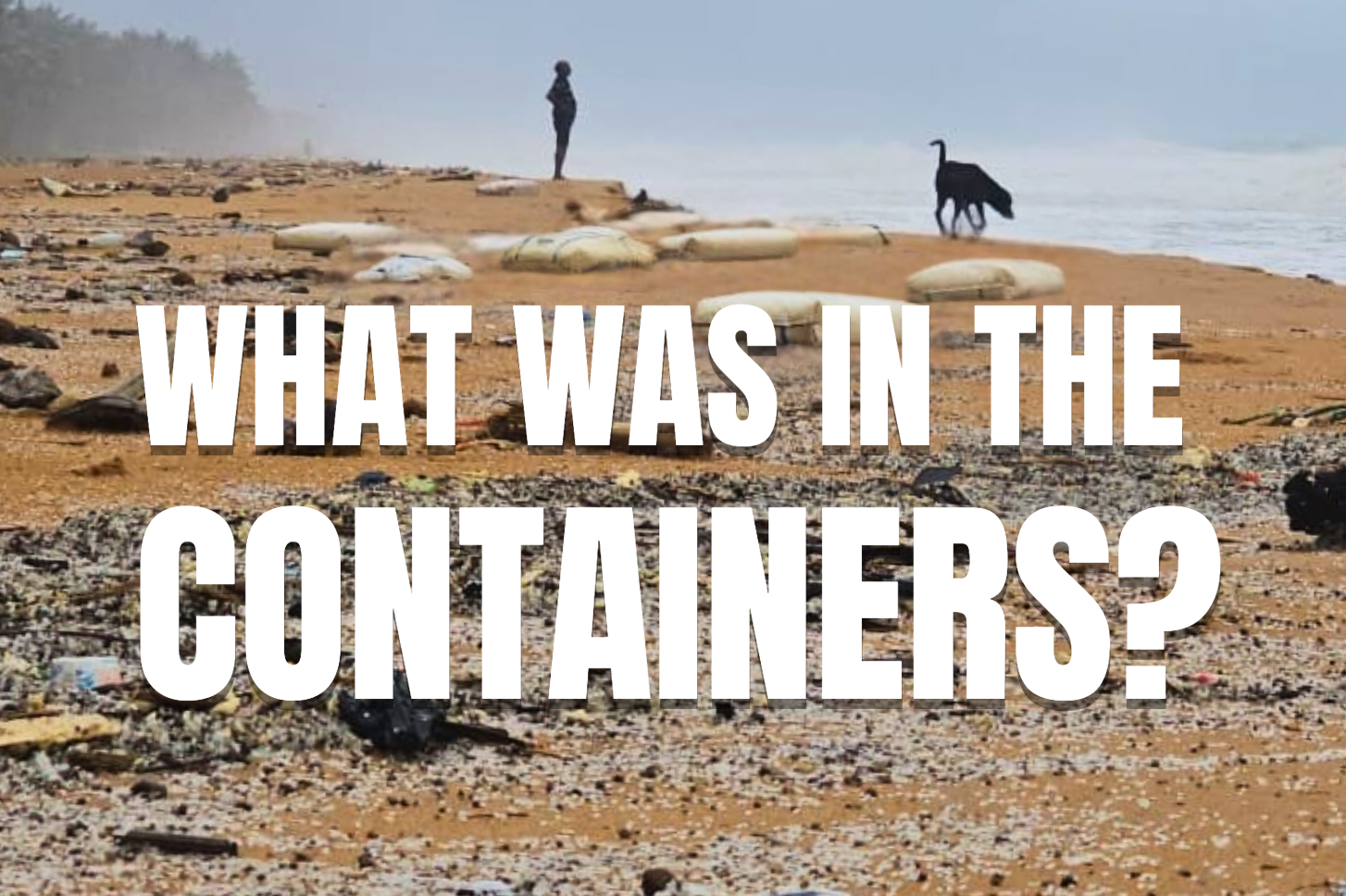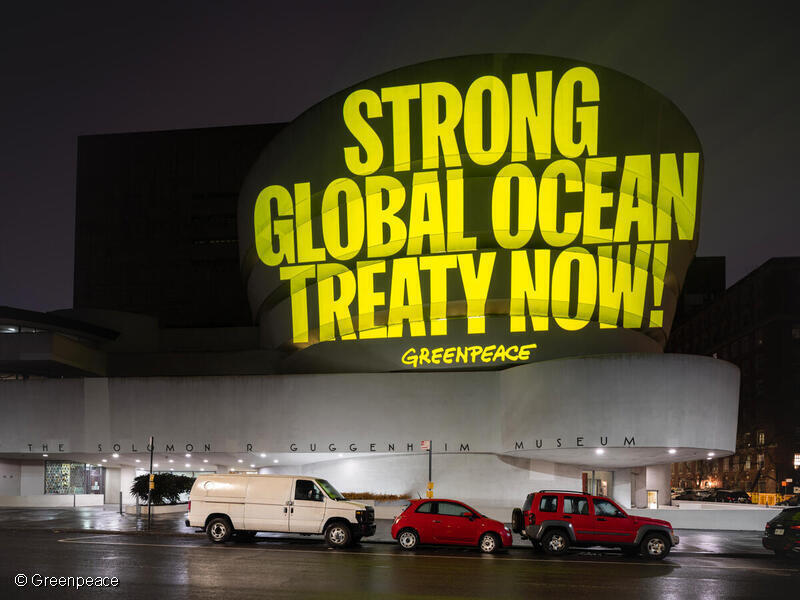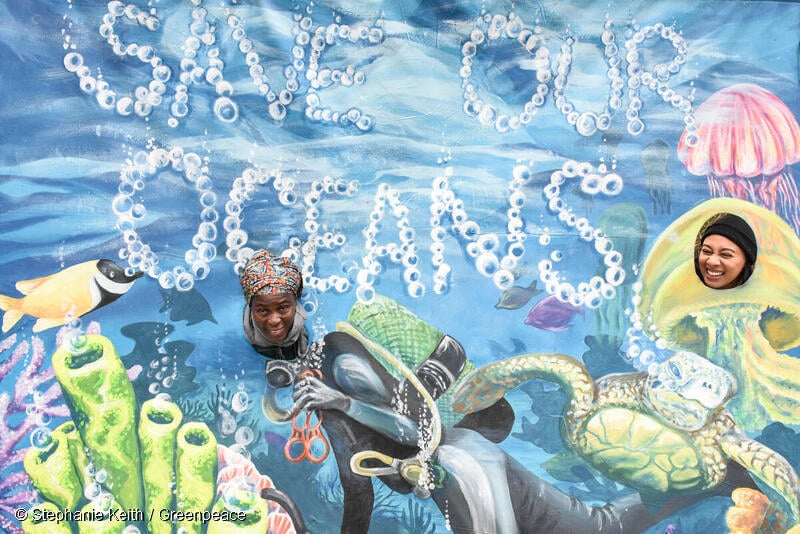To mark the launch of new movie, Big Miracle starring Drew Barrymore, about the 1988 rescue of grey whales in Alaska, we’re publishing this fascinating story by Campbell Plowden who was a Greenpeace whales campaigner who played a key part; he describes one of the craziest weeks in his 14 years with Greenpeace, and puts the whale rescue story dramatised the movie Big Miracle in the context of a wider campaign to end whaling worldwide.
When I woke up on the morning of October 14, 1988, I caught a quick radio report that a few grey whales had been spotted in some rapidly closing holes in the sea ice off of Barrow, Alaska.
I was sorry to hear the news since I cared a great deal about whales, but this was a natural event that at that moment I didn’t consider we could or should try to do anything about. I had my hands full as the Whale Campaign Coordinator for Greenpeace USA. We were waging an all-out battle to stop the whaling industry in three countries, with our attention focused on Iceland which was killing endangered fin whales as part of its so-called “research” whaling program. Just a week before, I had received the best news yet from our 18-month-old international boycott of Icelandic fish products, and the pressure on U.S. and European companies that bought them; Long John Silver’s chain of seafood restaurants was cancelling a $7 million contract to buy fish from a major Icelandic fish exporter. The Icelandic Prime Minister and parliament were publicly discussing whether to pull the plug on their whaling program.

We Saved the whales: Big Miracle
When I walked into the Greenpeace office on “U” street in Washington DC the receptionist greeted me somewhat wearily and handed me a stack of pink message slips. Voicing the understatement of the week, she said “a lot of people have been calling asking what Greenpeace is going to do to save the whales trapped in the ice in Alaska.” I realized on the spot that we had no choice about whether or not we wanted to accept this incident as a natural event or ignore it as a distraction. Dealing with it had just become our mandate; I had to give it my best shot and try to use the opportunity to also save a lot more whales around Iceland.
I haven’t yet seen the movie Big Miracle, which dramatizes the rescue of two of these whales, but from what I understand, it focuses almost exclusively on the events in Alaska involving the Inuit community of Barrow who were whale hunters, various government and industry people, and a very passionate Greenpeace wildlife campaigner in Alaska – Cindy Lowry (characterized as Rachel in the movie). I will, therefore, avoid any comments on how this film blends or blurs fact and fiction in their movie. I would like to share some of what I went through during those intense days, mostly behind the scenes. My pack-rat habits have aided this account, as I unearthed the notebook that I kept during this time to refresh some memories. Anne Dingwall – my supervisor at Greenpeace at the time helped me remember some more. For people who want to learn more about this whole story, I recommend the book “Freeing the whales: How the media created the world’s greatest non-event” by Tom Rose.
By the time this story hit the national news, it seemed the whales had been isolated in their few remaining holes for a week, and observers thought that they could only last for a few more days. The technical objective was breaking through five miles (8km) of ice between the whales and the open leads in the ocean. I got a quick education from my colleagues in navigating the often dicey relations between Greenpeace, native Alaskan whale hunters, oil companies, biologists, journalists, and a diverse assortment of officials from the state and federal government and military was going to be equally challenging.
The first obvious solution to this problem was to find an icebreaker that could clear a path through the sea ice to the whales. I quickly found out that the U.S. Government wasn’t going to be able to help with this. It only had two ships that might be strong enough for the job; one of them was several hundred miles away, heading away from Barrow and stuck in the ice itself. The only other Coast Guard icebreaker was undergoing repairs in distant Seattle. Hopes of scoring a private icebreaker didn’t last long either. The Amoco oil company had one, but it was guarding a drill ship over 150 miles (240km) away.
From Day 1, I began brainstorming with Ed Simmons, who had been the manager of Greenpeace’s first Rainbow Warrior, about ways to break through the ice or other ways get the whales out. Other people began calling in from all over the country with their suggestions. I talked with them all never knowing if the next idea was going to be whacky or brilliant. These included explosives, a high-speed water drill used to cut concrete, a portable laser, jet pumps, a PASER – particle steam erosion device used for cutting glass and steel, and a mining machine with rotating teeth. Other approaches we considered were airlifting the whales out on slings, and attracting the whales to freedom with whale sounds. Some were intriguing, but turned out not to be workable because we couldn’t get the right equipment there in time, they posed too much danger to the whales, and/or they would need more energy to run than would be available on the ice.
We were left with two solid ideas. One – the Veeco company, which supports the oil industry, was willing to provide a hover barge that could conceivably help break a path through the ice closest to the whales that was less than a foot thick. The inescapable reality, though, was that we also needed a way to break through a pressure ridge between the whales and the sea that was over 35 (11m) feet thick. If there was no icebreaker available from the U.S. government or industry, we needed to ask the Soviet Union if they had one that could help.
Our initial conversations with the U.S. Government to pursue this latter option were not encouraging. President Reagan was not known for his love for the Soviet Union, and the idea of asking this Communist giant to send one or more of their ships into U.S. waters to help save two whales seemed absurd. The U.S.S.R. was killing up to 169 of these grey whales a year – supposedly to provide traditional food for natives on their side of the Beaufort Sea, but Greenpeace had shown only four years before that most of these whales were in fact being used to feed mink in a fur ranch next to the whaling station. If the U.S. government couldn’t figure out a way to save these whales themselves, then perhaps the Alaskan natives could just go ahead and harvest them to supplement their take of bowhead whales.
One person calling in said that she had an in with industrialist Armand Hammer, who supposedly had good connections with the Russians. She called back very frustrated, though, with a report that Mr. Hammer’s secretary had been rude to her.
Greenpeace, however, had its own channel into the Evil Empire. Former Greenpeace International Chairman David McTaggart had been cultivating a number of relationships with officials in the U.S.S.R. to pave the way for eventually opening an office there. I sent a message to David asking him if he knew an official we could contact to get the Soviet Union to send an icebreaker to help free the whales in Alaska. McTaggart was sick, but several days later, David’s assistant Brian Fitzgerald got back to me with a name – Arthur Chilingarov. He was with the State Committee for Hydrometeorology and Control of the Natural Environment and head of the Arctic and Antarctic Operations for the U.S.S.R. It seemed like he was the right guy to ask this question. While Greenpeace staff had their own system (called Greenlink) for sending and receiving electronic messages to each other via computer networks before the internet and regular email existed, the rest of the world mostly sent text long distances via telex. This usually involved typing a message into a machine that punched patterns of holes into a long piece of paper. This strip was fed into the sprocket of the machine that sent the message over phone lines to a telex machine of the recipient. After several calls to the Soviet Embassy, I tracked down a telex number for Chilingarov. Anne Dingwall and I composed and sent the message not knowing when or if we would receive any kind of reply.

Letter from Campbell Plowden to David McTaggert
Other events were progressing on day 3 and 4. Cindy Lowry had gone from Anchorage to Barrow to get as close the rescue operation as possible. Getting out there was not easy since the whales were a 9-mile/ (15km)/45 minute ride by snowmobile ride from Barrow. Reports on the condition of the whales from her and others out there were not good. Cindy thought they couldn’t see well and they were banging their heads on the ice – the smallest whale had bad cuts. They were probably not able to feed because the water was too shallow. Their breathing pattern showed clear stress, and one of the larger whales seemed to have pneumonia. Officials thought it unwise to give them drugs, though, for fear of stressing them even further.

Northern Neighbours poster: Big Miracle
The Veeco barge was supposedly on the way, as was animal communications specialist Jim Nollman who hoped he could coax the whales toward their freedom with sound. The Marine Mammal lab in Seattle said they were sending up recordings of grey whales. The Eskimos were going out to hunt bowhead whales soon, but for now they were committed to saving these greys. They had given them the Inupiat names of Siku (ice), Putu (icehole), and Knik (snowflake). Arnold Brower, head of the Alaskan Eskimo Whaling Commission, and other Inuit were out on the ice chopping new breathing holes for the whales.
I had many busy days during my years with Greenpeace during direct actions and in between, but this week was one of the craziest. My ear was painfully sore from pressing the phone to it almost every waking minute. In addition to staying in touch with Cindy and others about the whale rescue and fish boycott, I got a mega-dose of dealing with the media. I was a guest on two national network morning talk shows and spoke to dozens of reporters representing major wire services, newspapers, TV and radio stations. On day 5 of the rescue, I got up at 4 am to be interviewed on Good Morning Ulster in Northern Ireland. It was an undeniable high, but it was also frustrating because most reporters only wanted to hear about the drama in Alaska. I tried, when possible, to slip in a reminder that the world should also make some efforts to save the lives of thousands of whales in peril from the harpoons of whalers from Iceland, Japan and Norway.
The news of the Long John Silver’s cancellation of a $7 million contract to buy fish from a major Icelandic fish exporter was, however, shaking up things in that country. The Samband fisheries company sold its shares in the whaling company, and the Icelandic Prime Minister publicly speculated his country might halt its research whaling operation for a year. The contract withdrawal in the U.S. was fueling our sister boycott in Germany where major fish buyers were now about to cancel contracts of their own. The Icelandic cabinet and parliament were set to debate what to do about the whaling program in view of the attacks on their fishing industry by the “economic terrorists.”
By day 6, the Veeco hover barge was having lots of problems so alternatives were needed. I fielded several calls from people who may have recently seen movies with special forces in action. These suggestions included phosphorus charges and thermite bombs. One call came from a legitimate expert – an officer from an Explosive Ordinance Disposal Team in Adak, Alaska. He told me they had the experience, equipment and willingness to help. They could place shape charges in a circle to blow a series of thick holes in the ice. They would need to consult the Naval Weapons Center and the ice demolition manual about safe distances for setting off these types of charges. They were constrained from acting on their own so they asked us to contact the Chief of Naval Operations and request they he send their team to Barrow.
By the next day, the snow was blowing into the holes that the whales were using to breathe. Unhampered by bureaucracy, a few people from Minnesota had flown to Barrow at their own expense with a generator driven de-icing machine. It was basically a portable Jacuzzi whose bubbles helped dissolve the slurry of ice in the water that was impeding the whales’ ability to breathe.
It finally became clear that the hover barge was not going to arrive in time, so the U.S. military gave the rescue its best shot. It mustered a mammoth Chinook helicopter to drop a massive block of concrete on the ice, reel it back up on a cable and drop it again. The technique worked very well to break the ice, but it had one major flaw. It smashed the ice into pieces but the resulting holes were not clear enough for the whales to use them, and a Jacuzzi from Minnesota wasn’t going to help.
When it became clear to Iceland’s Finance Minister, back in Reykjavik, that a one-year halt to whaling would not derail the fish boycott, a proposal was floated to halt it for four years. Iceland’s Fisheries Minister, though, forcefully defended the continuation of the whaling and threatened to resign if any steps were taken to curtail the whaling. Iceland’s Foreign Ministry told U.S. Secretary of State George Schultz that his government was not going to stop whaling, and it wasn’t proper for his Prime Minister to have speculated about such a cessation before fully consulting with his cabinet. The Prime Minister then backtracked, said he had been misunderstood about his earlier remarks. We were now left hoping that a pro-whale Icelandic congressman would introduce a resolution to the Icelandic Parliament calling on the government to stop the whaling program. He privately urged Greenpeace to keep up the pressure to improve its chances of passage. I spent one morning scouting the Icelandic Embassy and finding the location of every other Icelandic consulate in the U.S. Surely all of the news about the whales in peril in Alaska might give a boost to demonstrations protesting the outright killing of hundreds of whales “for research” in Iceland.
The next day some local media showed interest in our pending protests of Icelandic whaling in Washington, D.C. The other big push we were mounting to stop Icelandic whaling was a lawsuit against the U.S. government for failure to enforce its own law. According to the Pelly Amendment, the U.S. can impose a ban on the import of fisheries products from any country that the Secretary of Commerce certifies is undermining the effectiveness of an international fisheries conservation agreement. It seemed plain that Iceland’s continued whaling was doing just this, since the Scientific Committee of the International Whaling Commission had stated that Iceland’s whaling program was not justified on scientific grounds, and the full IWC had passed a resolution with U.S. backing urging Iceland to halt this discredited “research” program. I joined a meeting at the prestigious law firm of Arnold and Porter in Washington that afternoon to review the progress of our case.
One week into the Alaska saga when things were indeed looking bleak, we got a welcome positive response from Arthur Chilingarov. The Soviets had two ice breakers that they could potentially send to assist in the rescue of the whales. The Admiral Makarov could be there in two days after resupplying. The only kicker was Chilingarov asked for our help to obtain the necessary clearances from the U.S. government. Rumors were flying around the media in Alaska that the Soviets might be sending an icebreaker, but we didn’t want to confirm this for fear of spooking the deal and leaving the whales long dead before any ships appeared. The U.S. apparently did not want to openly ask for the Soviets help, and the Soviets could not presume to offer their help and lose face if the U.S. might rebuff them.
The National Marine Fisheries Service (NMFS) had previous experience obtaining permission for Soviet fishing boats to enter U.S. waters, but this was something different. They had gotten as far as getting Department of Defense permission to ask the Soviets if a ship might be available. Due to the high profile nature of this case, however, the decision had been bumped to the State Department. We were initially encouraged to hear that Assistant Secretary of State John Negroponte (who later became a prominent ambassador in the Bush administration) would be supportive, but it fell to me to make our case to one of his aides, Tucker Skully.
I placed the call to Skully from Anne Dingwall’s office, who heard my end of the conversation. I relayed to him the steps we had first taken to find a U.S. icebreaker, subsequent contacts with the Soviets, and Chilingarov’s request for our assistance. Skully said that State was well aware of the Soviet icebreaker option and was studying it to see if it was viable. Given the vulnerable situation the whales were in, I asked him when they might be making a decision. Skully took considerable umbrage at my question, suggestion that his department needed any assistance from us to consider the matter and implication (correct in fact) that State was delaying giving the green light for the Soviet icebreakers to aid the whale rescue for political not practical considerations. He angrily ended the conversation by hanging up on me.
I quickly recounted Skully’s words to Anne. It was 4pm on a Friday, and it seemed unlikely that anyone in the State Department was going to announce any decision about this over the weekend. The whales were fading. The smallest whale Knik (“snowflake”) had stopped surfacing and had presumably already drowned under the ice. It was time to take a calculated risk to enlist the U.S. government as humble heroes in this mission to try and save the remaining two whales. I picked up the phone and dialed the number for Associated Press. I said, “This is Campbell Plowden, Whale Campaign Coordinator for Greenpeace. I’d like to let you know that the Soviet Union is going to send two icebreakers to help clear a path for the whales trapped in Alaska.” The media soon buzzed with variations on the phrase, “The Russians are Coming – to save the whales!” On Monday morning, a NMFS spokesperson from the Dept. of Commerce reported that a 1976 Environment agreement between the U.S. and U.S.S.R. was being referenced as the diplomatic device to authorize entry permits for the Admiral Makarov and Vladmir Arsenev to enter the territorial waters of the U.S.
In the end, the rescue was truly a joint effort between the Eskimos, the U.S. and Soviet governments, with Greenpeace and the media greasing the wheels. The most effective thing the U.S. military ended up doing was to fly in a C-130 transport plane full of chainsaws. Where elaborate schemes and machines failed, the Inuit hunters used the chainsaws to cut a series of holes in the ice spaced about 120 feet (35m) apart for a full mile. As the two medium-sized whales moved into a hole closer to the sea, they covered the holes closer to shore with plastic to discourage the whales’ return to it. They couldn’t have gone much further because the ice was getting thicker. They had reached water that was deep enough, though, to accommodate the Soviet icebreakers that had crashed through the pressure ridge and forged a temporary three-mile path to the ocean. When I heard that the whales had eventually figured this out and swam to their freedom I was more relieved than jubilant.

Operation Breakthrough
Most of my work involved trying to save whales neither I nor anyone would ever see, but I silently prayed for these two survivors. It seemed too cruel an irony to contemplate that while two Soviet ships had played a critical role in freeing Siku and Putu, another Soviet ship could easily harpoon them like any other grey in the Beaufort Sea for mink food the following year. I was happy to get a patch commemorating the joint rescue from a friend at NMFS commemorating the event. It had figures of a few grey whales poking their heads up with the words, Operation Breakthrough stitched on it in both Russian and English.
We had our whaling protest in front of the Icelandic Embassy in Washington, D.C., but it wasn’t very well attended by supporters, nor covered much by the media. The boycott campaign did, however, carry on. Several other fast-food chains joined Long John Silvers in cancelling contracts to buy Icelandic fish until Iceland stopped whaling. One Greenpeace organizer in Boston talked more than 50 school districts in New England into taking a similar pledge. We didn’t succeed in convincing Burger King to follow suit, but they did stop calling their fish sandwich The Whaler. The combined boycott actions in the U.S., Germany and the United Kingdom cost Iceland more than $50 million in lost fish sales. The Icelandic government didn’t stop its research whaling plan mid-stream, but at the end of its three-year run, it did not renew it.
The Reagan administration took no action against Icelandic whaling – documents revealed during the discovery phase of the lawsuit showed that it didn’t wish to upset a country it considered an important NATO ally. A defiant Iceland left the IWC in 1992 to continue whaling without IWC restrictions. Its failure to do so eventually led it to reenter the commission in 2006. It has resumed killing whales for openly commercial purposes with the intent of selling the whale meat to Japan, something that they have so far been unable to do. The U.S. Secretary of Commerce certified that Iceland under the Pelly Amendment in 2010 declaring that its killing of several hundred whales in contravention of the 1982 moratorium on commercial whaling is weakening the effectiveness of the IWC. The certification letter articulates the U.S. government’s desire for Iceland to stop whaling, but it only calls for various diplomatic measures rather than imposing any tough sanctions such as an import ban on Icelandic fish. Japan and Norway are also still actively engaged in whaling, although on a far smaller scale than previously.
I worked with Greenpeace and the Humane Society of the U.S. for the better part of 14 years to stop the commercial killing of whales, and now devote most of my time to rainforest conservation and supporting sustainable native livelihoods in the Amazon, through an organization I founded called the Center for Amazon Community Ecology. I hope that Big Miracle can inspire the current generation to overcome their differences and keep working for a last peace for the whales and sane policies to protect the oceans and all of Earth’s precious environment.

Campbell Plowden
Campbell Plowden is a former whale campaign coordinator for Greenpeace USA and Greenpeace International, and is currently the executive director of the Center for Amazon Community Ecology.




